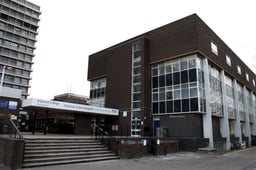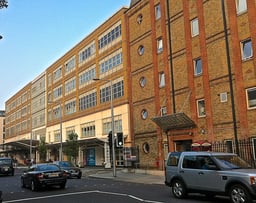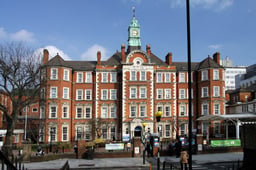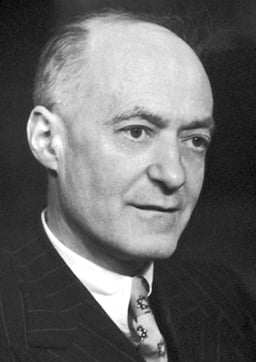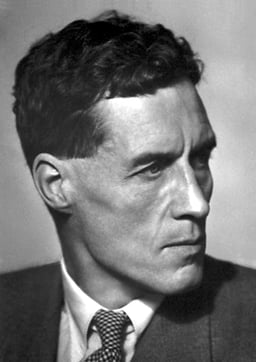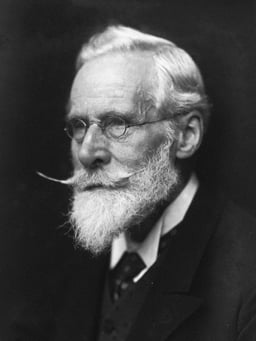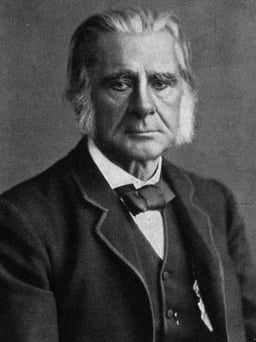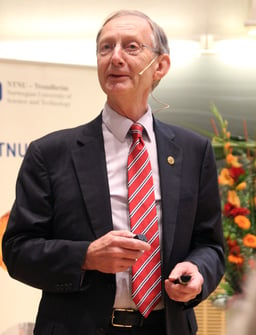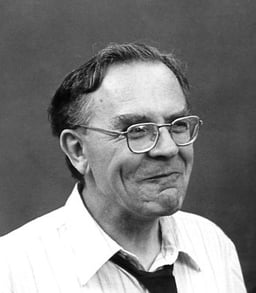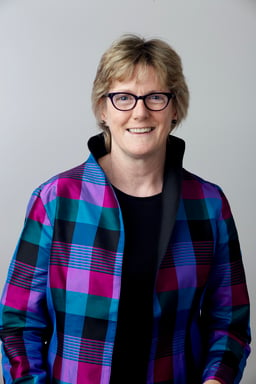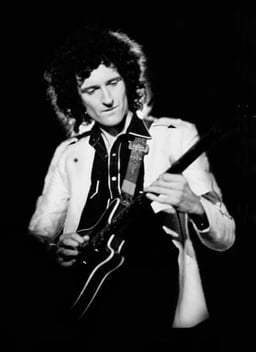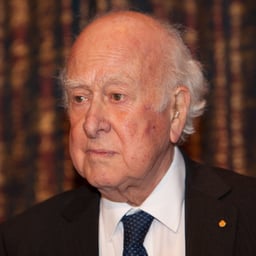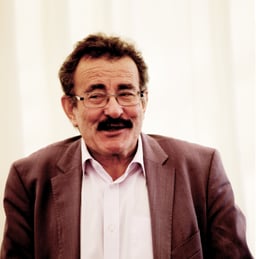Imperial College London
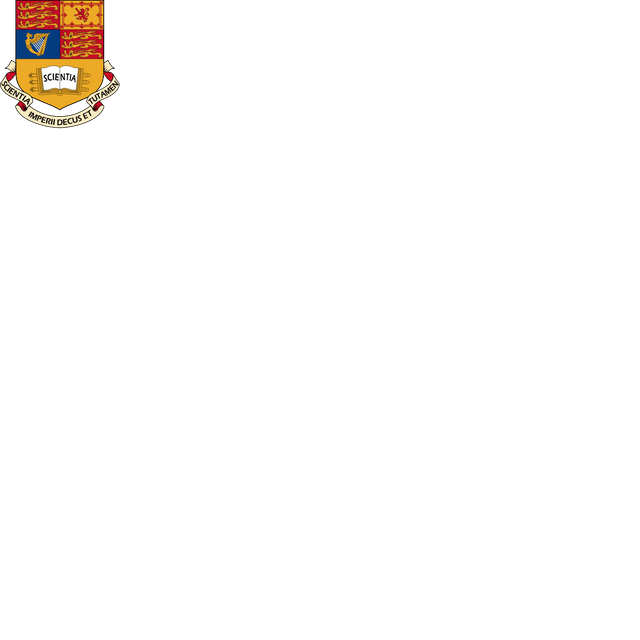
Imperial College London

| Motto | Latin: Scientia imperii decus et tutamen[4] | ||||||||||||||||||||||
|---|---|---|---|---|---|---|---|---|---|---|---|---|---|---|---|---|---|---|---|---|---|---|---|
Motto in English | Scientific knowledge, the crowning glory and the safeguard of the empire | ||||||||||||||||||||||
| Type | Public research university | ||||||||||||||||||||||
| Established | 1907 by royal charter[6] (1823 earliest medical school) | ||||||||||||||||||||||
| Endowment | £157.1 million(as of 31 July 2017)[7] | ||||||||||||||||||||||
| Budget | £1.027 billion(2017–2018)[7] | ||||||||||||||||||||||
| President | Alice Gast | ||||||||||||||||||||||
| Provost | Ian Walmsley | ||||||||||||||||||||||
| Visitor | Jacob Rees-Mogg (as Lord President of the Council ex officio) | ||||||||||||||||||||||
Academic staff | 3,765[8](2016–2017) | ||||||||||||||||||||||
Administrative staff | 3,940[8](2016–2017) | ||||||||||||||||||||||
| Students | 17,690 (2016/17)[9] | ||||||||||||||||||||||
| Undergraduates | 9,520 (2016/17)[9] | ||||||||||||||||||||||
| Postgraduates | 8,170 (2016/17)[9] | ||||||||||||||||||||||
| Location | London ,United Kingdom | ||||||||||||||||||||||
| Scarf | |||||||||||||||||||||||
| Colours | Imperial blue[10] | ||||||||||||||||||||||
| Affiliations |
| ||||||||||||||||||||||
| Website | www.imperial.ac.uk [181] | ||||||||||||||||||||||
 | |||||||||||||||||||||||
| National rankings | |||||||||||||||||||||||
| Complete (2020)[73] | 5 | ||||||||||||||||||||||
| Guardian (2020)[74] | 7 | ||||||||||||||||||||||
| Times / Sunday Times (2020)[75] | 4 | ||||||||||||||||||||||
| Global rankings | |||||||||||||||||||||||
| ARWU (2018)[76] | 24 | ||||||||||||||||||||||
| QS (2020)[77] | 9 | ||||||||||||||||||||||
| THE (2020)[78] | 9 | ||||||||||||||||||||||
| British Government assessment | |||||||||||||||||||||||
| Teaching Excellence Framework[79] | Gold | ||||||||||||||||||||||
Imperial College London (legally Imperial College of Science, Technology and Medicine)[11] is a public research university located in London. In 1851, Prince Albert built his vision of an area for culture, including the Victoria and Albert Museum, Natural History Museum, Royal Colleges, Royal Albert Hall, and the Imperial Institute.[12][13] In 1907, Imperial College was established by royal charter, merging the Royal College of Science, Royal School of Mines, and City and Guilds of London Institute.[14] In 1988, the Imperial College School of Medicine was formed by combining with St Mary's Hospital Medical School. In 2004, Queen Elizabeth II opened the Imperial College Business School.
The main campus is located in South Kensington, with an innovation campus in White City. The college also has a research centre at Silwood Park, and teaching hospitals throughout London. The university focuses exclusively on science, engineering, medicine, and business. Imperial has an international community, with more than 59% of students from outside the UK and 140 countries represented on campus.[15][16]
In 2019–20, Imperial is globally ranked 9th in the Times Higher Education World University Rankings, 9th in the QS World University Rankings, 24th in the Academic Ranking of World Universities, and 8th in Reuters The World's Most Innovative Universities.[17][18][19][20] Student, staff, and researcher affiliations include 14 Nobel laureates, 3 Fields Medalists, 1 Turing Award winner, 74 Fellows of the Royal Society, 87 Fellows of the Royal Academy of Engineering, and 85 Fellows of the Academy of Medical Sciences.[21]
| Motto | Latin: Scientia imperii decus et tutamen[4] | ||||||||||||||||||||||
|---|---|---|---|---|---|---|---|---|---|---|---|---|---|---|---|---|---|---|---|---|---|---|---|
Motto in English | Scientific knowledge, the crowning glory and the safeguard of the empire | ||||||||||||||||||||||
| Type | Public research university | ||||||||||||||||||||||
| Established | 1907 by royal charter[6] (1823 earliest medical school) | ||||||||||||||||||||||
| Endowment | £157.1 million(as of 31 July 2017)[7] | ||||||||||||||||||||||
| Budget | £1.027 billion(2017–2018)[7] | ||||||||||||||||||||||
| President | Alice Gast | ||||||||||||||||||||||
| Provost | Ian Walmsley | ||||||||||||||||||||||
| Visitor | Jacob Rees-Mogg (as Lord President of the Council ex officio) | ||||||||||||||||||||||
Academic staff | 3,765[8](2016–2017) | ||||||||||||||||||||||
Administrative staff | 3,940[8](2016–2017) | ||||||||||||||||||||||
| Students | 17,690 (2016/17)[9] | ||||||||||||||||||||||
| Undergraduates | 9,520 (2016/17)[9] | ||||||||||||||||||||||
| Postgraduates | 8,170 (2016/17)[9] | ||||||||||||||||||||||
| Location | London ,United Kingdom | ||||||||||||||||||||||
| Scarf | |||||||||||||||||||||||
| Colours | Imperial blue[10] | ||||||||||||||||||||||
| Affiliations |
| ||||||||||||||||||||||
| Website | www.imperial.ac.uk [181] | ||||||||||||||||||||||
 | |||||||||||||||||||||||
| National rankings | |||||||||||||||||||||||
| Complete (2020)[73] | 5 | ||||||||||||||||||||||
| Guardian (2020)[74] | 7 | ||||||||||||||||||||||
| Times / Sunday Times (2020)[75] | 4 | ||||||||||||||||||||||
| Global rankings | |||||||||||||||||||||||
| ARWU (2018)[76] | 24 | ||||||||||||||||||||||
| QS (2020)[77] | 9 | ||||||||||||||||||||||
| THE (2020)[78] | 9 | ||||||||||||||||||||||
| British Government assessment | |||||||||||||||||||||||
| Teaching Excellence Framework[79] | Gold | ||||||||||||||||||||||
History
19th century
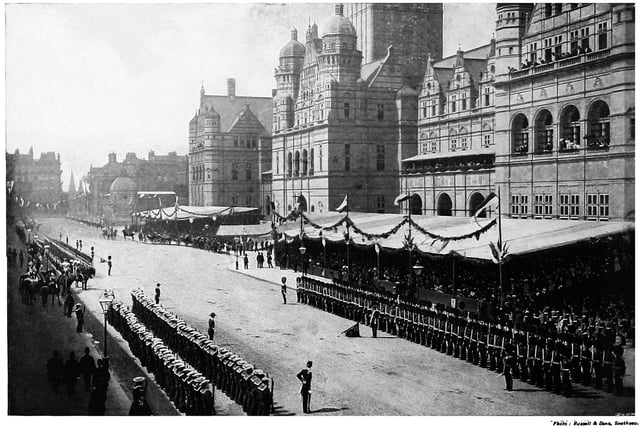
The Imperial Institute
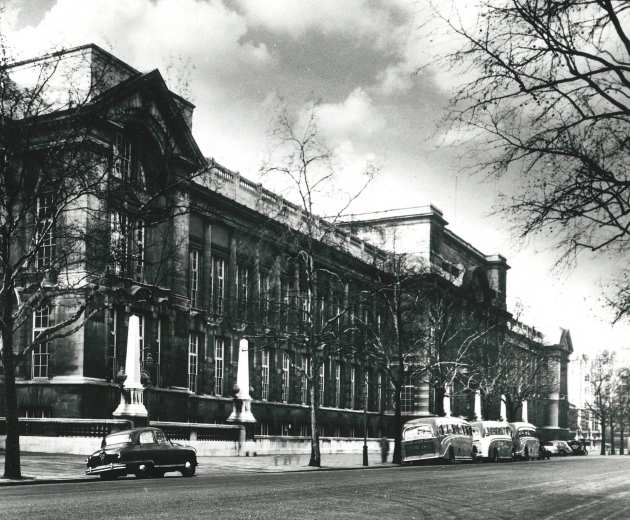
Royal College of Science
The earliest college that led to the formation of Imperial was the Royal College of Chemistry, founded in 1845, with the support of Prince Albert and parliament.[13] This was merged in 1853 into what became known as the Royal School of Mines.[22] The medical school has roots in many different schools across London, the oldest of which being Charing Cross Hospital Medical School which can be traced back to 1823, followed by teaching starting at Westminster Hospital in 1834, and St Mary's Hospital in 1851.[23][24][25]
In 1851, the Great Exhibition was organised as an exhibition of culture and industry by Henry Cole and by Prince Albert, husband of the reigning monarch of the United Kingdom, Queen Victoria. An enormously popular and financial success, proceeds from the Great Exhibition were designated to develop an area for cultural and scientific advancement in South Kensington.[26] Within the next 6 years the Victoria and Albert Museum and Science Museum had opened, joined by new facilities in 1871 for the Royal College of Chemistry and in 1881 for the Royal School of Mines, the opening of the Natural History Museum in 1881, and in 1888 the Imperial Institute.[27]
In 1881, the Normal School of Science was established in South Kensington under the leadership of Thomas Huxley, taking over responsibility for the teaching of the natural sciences and agriculture from the Royal School of Mines.[28] The school was renamed the Royal College of Science by royal consent in 1890.[29] The Central Institution of the City and Guilds of London Institute, was opened as a technical education school on Exhibition Road by the Prince of Wales in early 1885.[14]
20th century
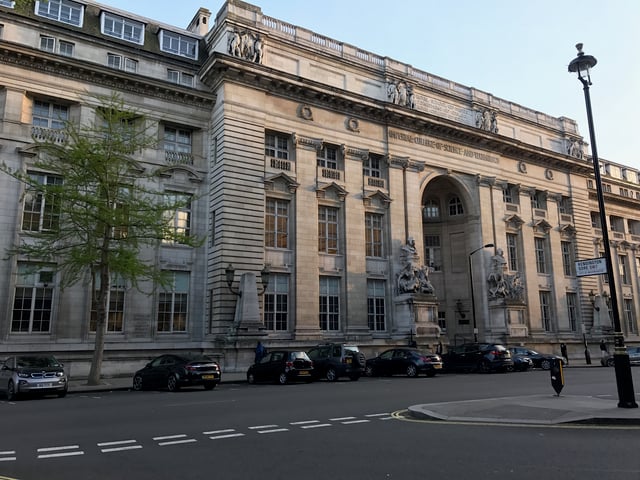
Royal School of Mines

Queen Elizabeth II opening the Imperial College Business School
At the start of the 20th century there was a concern that Britain was falling behind Germany in scientific and technical education. A departmental committee was set up at the Board of Education in 1904, to look into the future of the Royal College of Science. A report released in 1906 called for the establishment of an institution unifying the Royal College of Science and the Royal School of Mines, as well as – if agreement could be reached with the City and Guilds of London Institute – their Central Technical College.[30][31]
On 8 July 1907, King Edward VII granted a Royal Charter establishing the Imperial College of Science and Technology. This incorporated the Royal School of Mines and the Royal College of Science. It also made provisions for the City and Guilds College to join once conditions regarding its governance were met, as well as for Imperial to become a college of the University of London.[32] The college joined the University of London on 22 July 1908, with the City and Guilds College joining in 1910.[33][14] The main campus of Imperial College was constructed beside the buildings of the Imperial Institute, the new building for the Royal College of Science having opened across from it in 1906, and the foundation stone for the Royal School of Mines building being laid by King Edward VII in July 1909.[30]
As students at Imperial had to study separately for London degrees, in January 1919, students and alumni voted for a petition to make Imperial a university with its own degree awarding powers, independent of the University of London.[34][35] In response, the University of London changed its regulations in 1925 so that the courses taught only at Imperial would be examined by the university, enabling students to gain a BSc.[36]
In October 1945, King George VI and Queen Elizabeth visited Imperial to commemorate the centenary of the Royal College of Chemistry, which was the oldest of the institutions that united to form Imperial College. "Commemoration Day", named after this visit, is held every October as the university's main graduation ceremony.[37][38] The college also acquired a biology field station at Silwood Park near Ascot, Berkshire in 1947[39]
Following the second world war, there was again concern that Britain was falling behind in science – this time to the United States. The Percy Report of 1945 and Barlow Committee in 1946 called for a "British MIT"-equivalent, backed by influential scientists as politicians of the time, including Lord Cherwell, Sir Lawrence Bragg and Sir Edward Appleton.[40][41] The University Grants Committee strongly opposed however,[40] and so a compromise was reached in 1953, where Imperial would remain within the university, but double in size over the next ten years.[42][43] The expansion led to a number of new buildings being erected. These included the Hill building in 1957 and the Physics building in 1960, and the completion of the East Quadrangle, built in four stages between 1959 and 1965. The building work also meant the demolition of the City and Guilds College building in 1962–63, and the Imperial Institute's building by 1967.[44] Opposition from the Royal Fine Arts Commission and others meant that Queen's Tower was retained, with work carried out between 1966 and 1968 to make it free standing.[45] New laboratories for biochemistry, established with the support of a £350,000 grant from the Wolfson Foundation, were opened by the Queen in 1965.[46][47]
In 1988, Imperial merged with St Mary's Hospital Medical School under the Imperial College Act 1988. Amendments to the royal charter changed the formal name of the institution to The Imperial College of Science, Technology and Medicine and made St Mary's a constituent college.[48] This was followed by mergers with the National Heart and Lung Institute in 1995 and the Charing Cross and Westminster Medical School, Royal Postgraduate Medical School (RPMS) and the Institute of Obstetrics and Gynaecology in 1997, with the Imperial College Act 1997 formally establishing the Imperial College School of Medicine.[49]
21st century
In 2003, Imperial was granted degree-awarding powers in its own right by the Privy Council and in 2004 the Imperial College Business School, and a new main entrance on Exhibition Road were opened by Queen Elizabeth II.[50][51] The UK Energy Research Centre was also established in 2004 and opened its headquarters at Imperial. On 9 December 2005, Imperial announced that it would commence negotiations to secede from the University of London.[52] Imperial became fully independent of the University of London in July 2007.[53][54][55]
In April 2011, Imperial and King's College London joined the UK Centre for Medical Research and Innovation as partners with a commitment of £40 million each to the project. The centre was later renamed the Francis Crick Institute and opened on 9 November 2016. It the largest single biomedical laboratory in Europe. The college began moving into the new White City campus in 2016, with the launching of the Innovation Hub.[56] This was followed by the opening of the Molecular Sciences Research Hub for the Department of Chemistry, officially opened by Mayor of London, Sadiq Khan in 2019.[57]
Campuses
South Kensington
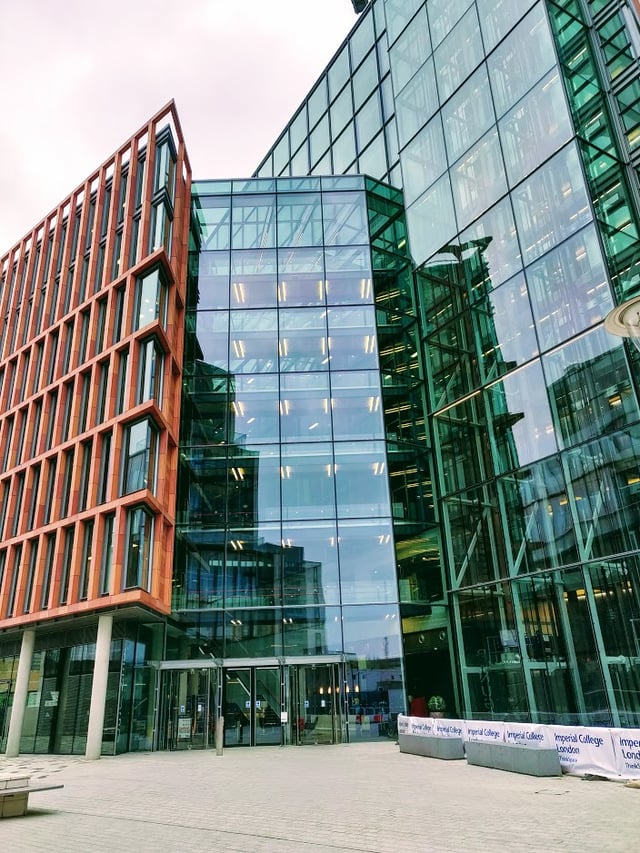
Translation & Innovation Hub, White City
The South Kensington campus is the college's main campus, where most teaching and research takes place. It is home to many notable buildings, such as the Business School, Royal School of Mines, and Royal College of Science. It is also the original site of the Imperial Institute, whose Queen's Tower stands at the heart of the campus overlooking Queen's Lawn. As part of a cultural centre known as Albertopolis the campus is surrounded by many of London's most popular attractions, including the Royal Albert Hall and Kensington Palace, museums including the Natural History Museum, Science Museum, and Victoria and Albert Museum, and institutions such as the Royal College of Art, the Royal College of Music, and the National Art Library.[58][59]
The campus has many restaurants and cafés run by the college,[60] and contains much of the college's student accommodation, including the Prince's Garden Halls, and Beit Hall, home to the college union, which runs student pubs, a nightclub, and a cinema on site. To the north, within easy walking distance of the college, are Kensington Gardens and Hyde Park, with green spaces and sports facilities used by many of the student clubs.[61] In 2019, the college opened "The Bakery," home to the university's on-campus Starbucks Coffee.[62]
White City
A second major campus has started opening in White City, to the west of the main campus, providing an innovation hub for the college, including research facilities and commercialisation space, as well as postgraduate accommodation.[63] The chemistry department moved much of its research to the new Molecular Sciences Research Hub on the campus in 2018,[57] with further departments and industry partners moving to the campus and surrounding area over the coming years.[64] The campus is also home to the Invention Rooms, a college hackerspace and community outreach centre.[65]
Silwood Park
Silwood Park is a postgraduate campus of Imperial located in the village of Sunninghill near Ascot in Berkshire. The Silwood Park campus includes a centre for research and teaching in ecology, evolution, and conservation set in 100 ha of parkland where ecological field experiments are conducted, and contains student halls for students studying for a degree on the site.
Hospitals
Imperial has teaching hospitals across London which are used by the School of Medicine for undergraduate clinical teaching and medical research. All are based around college-affiliated hospitals, and also provide catering and sport facilities. College libraries are located on each campus, including the Fleming library at St Mary's.[66]
Organisation and administration
Faculties and departments

The Brevan Howard Centre for Financial Analysis
Imperial is organised through a network of faculties and departments:[67]
Global institutes
Imperial hosts global centres to promote inter-disciplinary work:
Energy Futures Laboratory
Gandhi Centre for Inclusive Innovation
Grantham Institute for Climate Change
Institute for Security Science & Technology
Centre for Health Economics & Policy Innovation
Brevan Howard Centre for Financial Analysis & Technology
Global Entrepreneurship & Development Index
Data Science Institute
Institute for Molecular Science and Engineering
Francis Crick Institute
Academic centres
Imperial College also houses two academic centres, formerly the Department of Humanities, offering teaching to undergraduate and postgraduate students in modern and historical languages, arts and humanities subjects, social sciences and other subjects which fall outside of the standard remit of science, technology and medicine. The aim of these centres is to provide training in study skills, such as the acquisition of English language proficiency, but also to encourage innovatory and interdisciplinary approaches to science, technology and medicine, which might make use of study of the arts, humanities, languages and social sciences. The academic centres are the:
Centre for Academic English
Centre for Languages, Culture and Communication
The Centre for Languages, Culture and Communication also operates as Imperial College London's adult education centre, offering evening class courses in the arts, humanities, languages and sciences.[68]
Governance
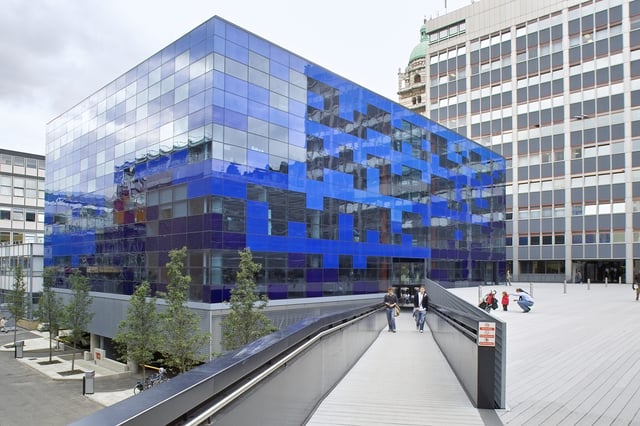
The Faculty Building, designed by Norman Foster
The highest academic official of Imperial College London is the President, formerly known as the Rector. The President is the chief executive, elected by the Council of the college and Chairman of the Senate.[69] The position has been held by Alice Gast, an American chemical engineer, since September 2014.[70]
In 2012, the additional post of Provost was created. James Stirling became the first Provost of Imperial College London in August 2013.[71] He was succeeded as Provost by Ian Walmsley in September 2018.
The council is the governing body of Imperial, it consists of 23 members including the Chairman, the President, the Provost, the President of the Imperial College Union, 4 members of senior staff, and between 9 and 13 lay members who are not employees of Imperial. The current Chair is Sir Philip Dilley.[72]
Finances and endowment
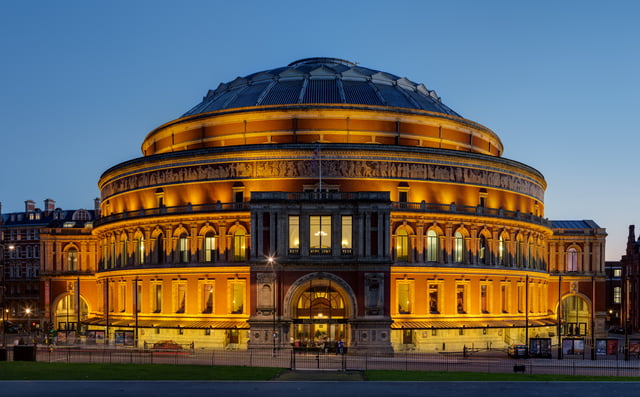
Graduation ceremonies take place in the Royal Albert Hall
In 2017/18, Imperial had a consolidated income of £1,033.0 million. It has the eighth largest endowment of any university in the United Kingdom, and the second largest of the universities in London.[7] The college's endowment is sub-divided into three distinct portfolios:
Unitised Scheme – a unit trust vehicle for the college, Faculties and Departments to invest endowments and unfettered income to produce returns for the long term
Non-Core Property – a portfolio containing around 120 operational and developmental properties which the college has determined are not core to the academic mission
Strategic Asset Investments – containing the college's shareholding in Imperial Innovations and other restricted equity holdings.[7]
Affiliations and partnerships
Imperial is a member of the Association of Commonwealth Universities, European University Association, Global Alliance of Technological Universities, League of European Research Universities and the Russell Group. It is a founding member of the Imperial College academic health sciences centre, the Francis Crick Institute and MedCity.
Academic profile
Rankings
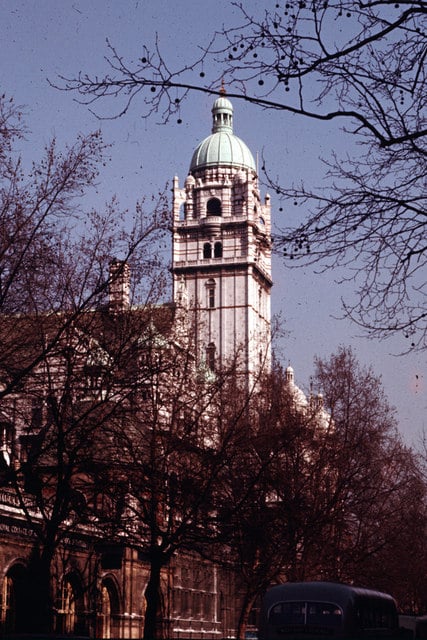
Queen's Tower
World & Europe
Imperial is ranked 9th globally by the 2019 Times Higher Education World University Ranking,[80] as well as 3rd in Europe and in the UK after Oxford and Cambridge.[81] Within the subject rankings, Imperial is ranked 4th globally in the clinical, pre-clinical and health category,[82] 11th in physical sciences,[83] 11th in computer science,[84] 12th in engineering and technology[85] and 14th in life sciences.[86]
The college is ranked 8th worldwide by the 2019 QS World University Ranking,[87] as well as 4th in Europe, and 1st in London.
Imperial is ranked 3rd in Europe, and 1st in London by the 2019 U.S. News & World Report Global Ranking.[88]
National
Imperial is ranked 4th in the 2019 Times Higher Education "Table of Tables" which combines the results of the 3 main domestic league tables.[89] In the 2019 Complete University Guide, all 14 of the subjects offered by Imperial were ranked top 10 nationally meaning it was one of three universities in the UK (along with Cambridge and Oxford) to have all subjects ranked in the top 10.[90]
Innovation
Career Prospects
As of 2018, the Guardian notes that Imperial graduates pick up the highest salaries in the UK in the first year after college, earning around a fifth more than students leaving Oxford and Cambridge.[95] According to a 2018 Department for Education report, Imperial boosted female graduates earnings 31.3% above the average female graduate, and male graduates similarly saw a 25.3% increase in earnings above the average male graduate.[96]
The New York Times ranked Imperial College as one of the top 10 most-welcomed universities by the global job market.[97]
Research
Imperial submitted a total of 1,257 staff across 14 units of assessment to the 2014 Research Excellence Framework (REF) assessment.[98] This found that 91% of Imperial's research is “world-leading” (46% achieved the highest possible 4* score) or “internationally excellent” (44% achieved 3*), giving an overall GPA of 3.36.[99][100] In rankings produced by Times Higher Education based upon the REF results Imperial was ranked 2nd overall.[99][100]
Imperial College London has a long term partnership with the Massachusetts Institute of Technology.[103][104] In January 2018, the mathematics department of Imperial and the French National Center for Scientific Research launched a joint research laboratory of mathematics – UMI Abraham de Moivre –aiming to tackle the most challenging problems still unsolved and to build a bridge between the British and French scientific knowledges, based on the South Kensington campus of Imperial.[105][106] The Fields medallists Cédric Villani and Martin Hairer hosted the launch presentation.[105]
Admissions
For 2017 entry, the acceptance rate was 12.98% for undergraduates and 16.36% for postgraduates.[111][112] At undergraduate level, there is roughly 1 place for 8 candidates. For 2017 entry, the domain with the lowest acceptance rate was Computing (12.9:1 ratio) followed by Mechanical Engineering (10.9:1) and Medicine (10.2:1).[111] The highest was Bioengineering (3.3:1).[111][112] By way of example, acceptance ratio in Mathematics was of 9.1:1, in Aeronautics 7.0:1, in Chemical Engineering 6.5:1, and in Physics 6.4:1.[111][112]
Imperial is among the most international universities in the United Kingdom,[114][115] with 50% of students from the UK, 16% of students from the EU, and 34% of students from outside the UK or EU.[114][116][117] The student body is 39% female and 61% male.[117] 36.5% of Imperial's undergraduates are privately educated, the fourth highest proportion amongst mainstream British universities.[115]
Libraries
The college's central library is located on Queen's Lawn and contains the main corpus of the college's collection. It previously also housed the Science Museum's library until 2014.[118] The Fleming library is located at St Mary's in Paddington, originally the library of St Mary's Hospital Medical School, with other hospital campuses also having college libraries.[119]
Medicine
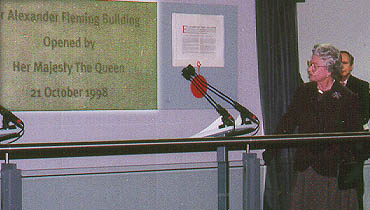
Queen Elizabeth II opening the Alexander Fleming Building
The Imperial Faculty of Medicine was formed through mergers between Imperial and the St Mary's, Charing Cross and Westminster, and Royal Postgraduate medical schools and has six teaching hospitals. It accepts more than 300 undergraduate medical students per year and has around 321 taught and 700 research full-time equivalent postgraduate students.
Imperial College Healthcare NHS Trust was formed on 1 October 2007 by the merger of Hammersmith Hospitals NHS Trust (Charing Cross Hospital, Hammersmith Hospital and Queen Charlotte's and Chelsea Hospital) and St Mary's NHS Trust (St. Mary's Hospital and Western Eye Hospital) with Imperial College London Faculty of Medicine.[120] It is an academic health science centre and manages five hospitals: Charing Cross Hospital, Queen Charlotte's and Chelsea Hospital, Hammersmith Hospital, St Mary's Hospital, and Western Eye Hospital. The Trust is currently one of the largest in the UK and in 2012/13 had a turnover of £971.3 million, employed approximately 9,770 people and treated almost 1.2 million patients.[121]
Other (non-academic health science centres) hospitals affiliated with Imperial College include Chelsea and Westminster Hospital, Royal Brompton Hospital, West Middlesex University Hospital, Hillingdon Hospital, Mount Vernon Hospital, Harefield Hospital, Ealing Hospital, Central Middlesex Hospital, Northwick Park Hospital, St Mark's Hospital, St Charles' Hospital and St Peter's Hospital.[122]
Controversies
Accusations of bullying
In 2003, it was reported that one third of female academics "believe that discrimination or bullying by managers has held back their careers".[123] Imperial has since won the Athena SWAN Award, which recognises employment practices that are supportive of the careers of women in science, technology, engineering and maths.
In 2007, concerns were raised about the methods that were being used to fire people in the Faculty of Medicine.[124][125] However, in 2014, Stefan Grimm, of the Department of Medicine, was found dead after being threatened with dismissal for failure to raise enough grant money.[126] His last email before his passing accused his employers of bullying by demanding that he should get grants worth at least £200,000 per year.[127][128] The college announced an internal inquiry into Stefan Grimm's death, and found that the performance metrics for his position were unreasonable, with new metrics for performance being needed.[129]
Student life
Student body

Queen's Lawn at South Kensington Campus
For the 2016/17 academic year, Imperial had a total full-time student body of 17,690, consisting of 9,520 undergraduate students and 8,170 postgraduates.[9] 50.7% of the student body is from outside of the UK.[130] 32% of all full-time students came from outside the European Union in 2013–14,[131] and around 13% of the International students had Chinese nationality in 2007–08.[132]
Imperial College Union
Imperial College Union is the students' union and is run by five full-time sabbatical officers elected from the student body for a tenure of one year, and a number of permanent members of staff. It is split into constituent unions aligned with the faculties of the college, carrying on the association with the original constituent colleges of Imperial, the Royal College of Science Union, City and Guilds College Union, Royal School of Mines Student's Union and Imperial College School of Medicine Students' Union. The Union is given a large subvention by the university, much of which is spent on maintaining over 300 clubs, projects and societies.[134] Examples of notable student groups and projects are Project Nepal which sends Imperial College students to work on educational development programmes in rural Nepal[135] and the El Salvador Project, a construction based project in Central America.[136] The Union also hosts sports-related clubs such as Imperial College Boat Club and Imperial College Gliding Club.
The Union operates on two sites, with most events at the Union Building on Beit Quad at South Kensington, with mostly medical school events at the Reynold's bar, Charing Cross.
Facilities

Ethos Gym
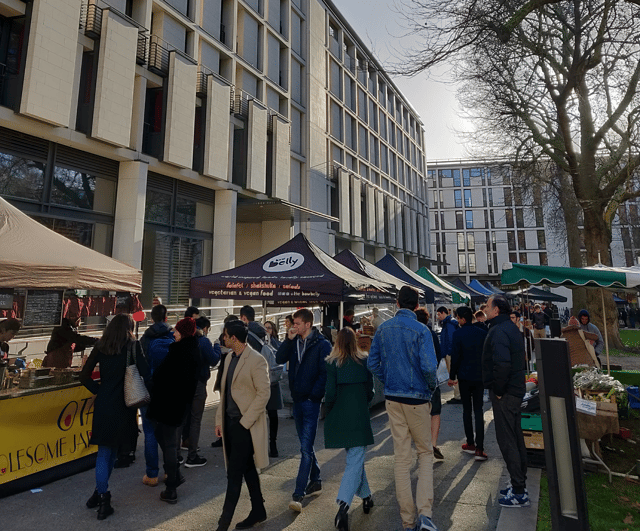
The weekly college farmer's market
Sports facilities at Imperial's London campuses include four gyms, including the main Ethos gym at the South Kensington Campus, two swimming pools and two sports halls.[137] Imperial has additional sports facilities at the Heston and Harlington sports grounds.
On the South Kensington campus, there are a total of six music practice rooms which consist of upright pianos for usage by people of any grade, and grand pianos which are exclusively for people who have achieved Grade 8 or above.[138]
There are two student bars on the South Kensington campus, one at the Imperial College Union and one at Eastside.[139] There are a number of pubs and bars on campus and also surrounding the campus, which become a popular social activity for Imperial's students. The Pewter tankard collection at Imperial College Union is the largest in Europe, with the majority of clubs and societies having tankards associated with their clubs.[140]
Student media
Imperial College Radio Imperial College Radio (ICRadio) was founded in November 1975 with the intention of broadcasting to the student halls of residence from a studio under Southside, actually commencing broadcasts in late 1976. It now broadcasts from the West Basement of Beit Quad over the internet.[141]
Imperial College TV
Imperial College TV (ICTV) is Imperial College Union's TV station, founded in 1969 and operated from a small TV studio in the Electrical Engineering block. The department had bought an early AMPEX Type A 1-inch videotape recorder and this was used to produce an occasional short news programme which was then played to students by simply moving the VTR and a monitor into a common room. A cable link to the Southside halls of residence was laid in a tunnel under Exhibition Road in 1972. Besides the news, early productions included a film of the Queen opening what was then called College Block.
Felix Newspaper
Felix is weekly student newspaper, first released on 9 December 1949.[142] In addition to news, Felix also carries comic strips, features, opinions, puzzles and reviews, plus reports of trips and Imperial College sporting events.
Student societies
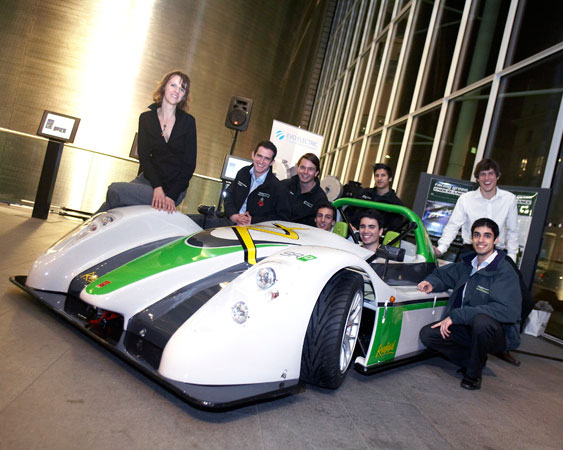
Racing Green Endurance is a student-led project to demonstrate the potential of zero-emission cars.
Imperial College Boat Club
The Imperial College Boat Club is the rowing club of Imperial and was founded on 12 December 1919. The college's boat house is located in Putney on the Thames, and was recently refurbished, reopening in 2014.[143] The club has a number of notable accolades, such as three alumni of the college in the gold medal winning GB 8+ at the 2000 Sydney Olympics, along with their coach Martin McElroy. The club has been highly successful, with many wins at Henley Royal Regatta.
Exploration Club
Imperial's Exploration Board was established in 1957 to assist students with a desire for exploration. Trips have included Afghanistan, Alaska, Cameroon, Ethiopia, Fiji, the Himalayas, Iran, Morocco, Norway, Tanzania, Thailand, Ukraine, and the Yukon.[144]
Dramatic Society The Imperial College Dramatic Society (DramSoc[145]) is one of two major theatrical arts societies, with the other being the Musical Theatre Society, and it was founded in 1912.[146] The society puts on three major plays each year, in addition to several smaller fringe productions. It is additionally one the London-based dramatic societies to participate in the London Student Drama Festival,[147] and regularly attends the Edinburgh Fringe. DramSoc is responsible for the day-to-day maintenance of the Union's theatrical space, the Union Concert Hall.
Student housing
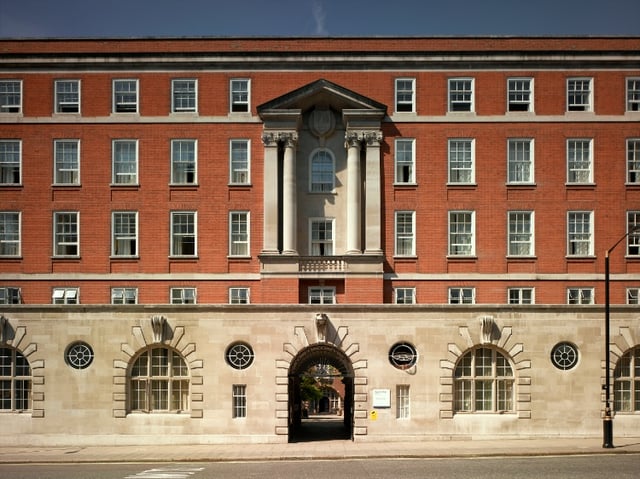
Beit Hall
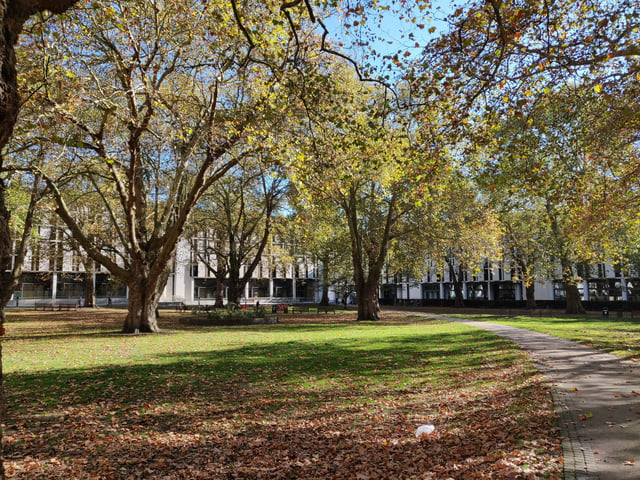
Prince's Gardens, surrounded by college halls of residence
Imperial College owns and manages twenty one halls of residence in Inner London, Acton, and Ascot. Over three thousand rooms are available, guaranteeing first year undergraduates a place in College residences.
The majority of halls offer single or twin accommodation with some rooms having en suite facilities. Bedrooms are provided with basic furniture and with access to shared kitchens and bathrooms. All rooms come with internet access and access to the Imperial network.[148] Most of them are considered among the newest student halls at London universities.
Most students in college or university accommodation are first-year undergraduates, since they are granted a room once they have selected Imperial as their firm offer with UCAS. The majority of older students and postgraduates find accommodation in the private sector, help for which is provided by the college private housing office. However a handful of students may continue to live in halls in later years if they take the position of a "hall senior", and places are available for a small number of returning students in the Evelyn Garden halls.[149] Some students also live in International Students House, London.
List of Halls of Residence:[150]
South Kensington Beit Hall Eastside Halls Linstead Hall Gabor Hall Wilkinson Hall Southside Halls Falmouth Hall Selkirk Hall Tizard Hall Keogh Hall
Evelyn Gardens Holbein Hall Southwell Hall Willis Jackson Hall
Parsons House
Pembridge Hall
Putney Boathouse
Wilson House
Woodward Buildings
Xenia
Notable alumni, faculty and staff
Nobel laureates: (medicine) Sir Alexander Fleming, Sir Ernst Boris Chain, Sir Frederick Gowland Hopkins, Sir Andrew Fielding Huxley, Rodney Robert Porter, (physics) Abdus Salam, Sir George Paget Thomson, Patrick Blackett, Baron Blackett, Dennis Gabor, Peter Higgs, (chemistry) Sir Norman Haworth, Sir Cyril Norman Hinshelwood, Sir Derek Barton, Sir Geoffrey Wilkinson, Sir George Porter.[21]
Fields medalists: Klaus Friedrich Roth, Sir Simon Donaldson, Martin Hairer.[151]
Academic affiliations include: Sir Tom Kibble, co-discoverer of Higgs Boson;[152] Sir Tejinder Virdee, experimental particle physicist;[153] Sir John Pendry, theoretical solid state physicist;[154] Sir Christopher Kelk Ingold, physical organic chemistry pioneer;[155] Sir William Henry Perkin, discoverer of the first synthetic organic chemical dye mauveine;[156] Sir Edward Frankland, originator of the theory of chemical valency;[157] Sir William Crookes, discoverer of thallium;[158] Sir Alan Fersht, chemist;[159] David Phillips, chemist;[160] Harold Hopkins, contributed to the theory and design of optical instruments;[161] Alfred North Whitehead, mathematician and philosopher;[162] Sir Steven Cowley, physicist and president of Corpus Christi College, Oxford;[163] and Sir John Ambrose Fleming, inventor of the vacuum tube.[164]
In biology and medicine; Thomas Huxley, advocate of the theory of evolution; Wendy Barclay, virologist; Dame Sally Davies, the Chief Medical Officer for England;[165] David Livingstone, medical missionary and Clare Lloyd, biologist. In engineering; Chi Onwurah, politician;[166] Dame Julia Higgins, polymer scientist;[167] Dame Judith Hackitt, former Chair of the Health and Safety Executive;[168] Dudley Maurice Newitt, scientific director of the Special Operations Executive;[169] and Julia King, Baroness Brown of Cambridge, engineer and Member of the House of Lords.[170]
Non-academic affiliations include: H. G. Wells, author;[171] Nicholas Tombazis, chief car designer at McLaren and Ferrari; Ralph Robins, CEO of Rolls-Royce;[172] Brian May, guitarist of rock band Queen;[173] Chew Choon Seng, CEO of Singapore Airlines; Sir Julius Vogel, former Prime Minister of New Zealand;[174] Rajiv Gandhi, Prime Minister of India;[175] Teo Chee Hean, Deputy Prime Minister of Singapore; Huw Thomas, Physician to the Queen;[176] Sir Roger Bannister, ran the first four-minute mile;[177] David Warren, inventor of the flight data recorder and cockpit voice recorder;[178] Andreas Mogensen, first Danish astronaut; David Pearson, software engineer; Winston Wong, entrepreneur; Alan Howard, hedge fund manager and philanthropist; Cyrus Pallonji Mistry, former chairman of the Tata Group;[179] Michael Birch, entrepreneur; Henry Charles Stephens, politician; Sir Michael Uren, businessman and philanthropist; Ian Read, CEO of Pfizer, Pallab Ghosh, BBC correspondent, Hannah Devlin, science journalist.
See also
Albertopolis
Education in London

